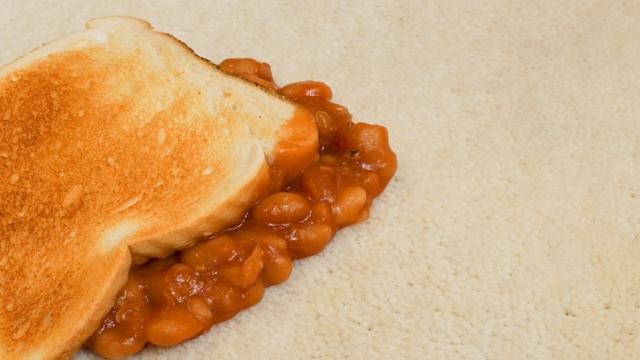Looks like it’s time to start giving 10-year-olds a little more credit where there scientific claims are concerned. According to a new study from Aston University in Birmingham, England, they were right all along — five seconds really does make a difference in terms of food safety.
To finally put an end to the age-old edibility debate, a team of students led by microbiology professor Anthony Hilton looked at the transfer of E. coli and Staphylococcus aureus (or the bacteria that causes Staph infection) from a variety of indoor floor types (carpet, laminate and tiled surfaces) to a variety of foods (toast, pasta, cookies, ham, dried fruit, and last but not least a “sticky dessert”). Each tested round of contact lasted between three and 30 seconds.
In what will surely be validating news to five-second rule champions everywhere, the researchers found that “time is a significant factor in the transfer of bacteria from a floor surface to a piece of food.” It’s not just the precious seconds your meal spends on the ground that matters, though; the type of flooring also plays a pretty big role. For instance, food dropped on carpet is the least likely to pick up bacteria, while food that sits on a hardwood floor for over five seconds is almost guaranteed to pick up something unpleasant — and it’s a moist food item, forget about it. Elaborating on the results, Hilton notes:
Consuming food dropped on the floor still carries an infection risk as it very much depends on which bacteria are present on the floor at the time; however the findings of this study will bring some light relief to those who have been employing the five-second rule for years, despite a general consensus that it is purely a myth.
Of course, this isn’t the first time the five-second rule has been put to the test. As the New york Daily News explains, The Mythbusters conducted an informal investigation and found that no real difference in bacteria occurs in food left on the floor between two and six seconds. But this newest study takes it a step further.
Now, does this mean you’re free to go speed-dining on the floor? No, of course not. If it can be avoided, it’s always best to not eat things off the ground — hopefully, this is not news. But the next time you drop something delicious, you can now rest assured that, assuming you’ve got quick fingers, that five-second grace period really does leave you better off. [Aston University via NY Daily News]
Picture: Shutterstock/stocksolutions
